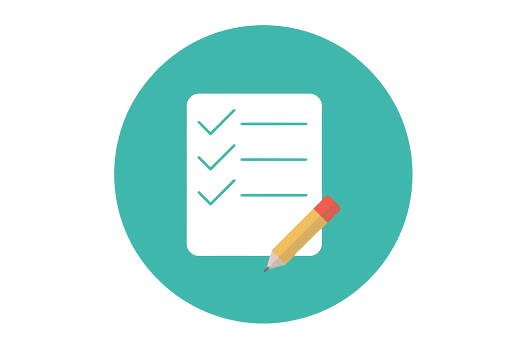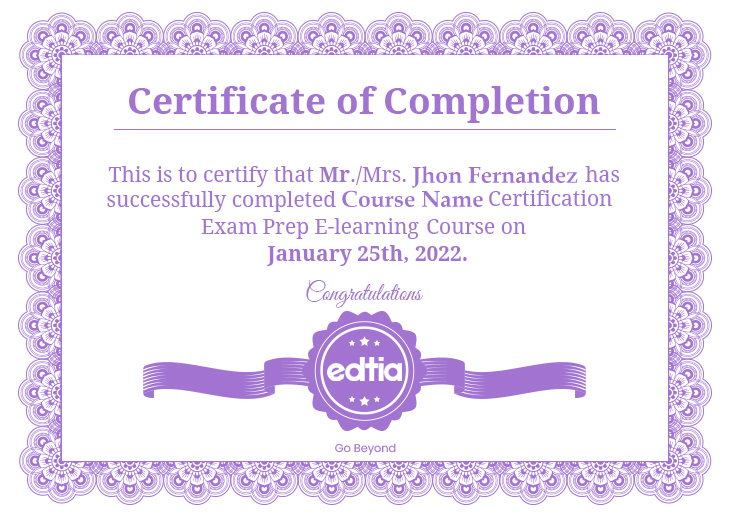Your Shopping Cart

Master Six Sigma by enrolling in EDTIA'S Lean Six Sigma Black Belt Training and upskill your knowledge and technological skills in Six Sigma. A Lean Six Sigma Black Belt certificate means professionals have the tactics and knowledge to gain leadership roles and achieve more for their organization, along with a personal sense of accomplishment.
This is based on the internationally acknowledged Body of Knowledge. A Lean Six Sigma Black Belt shows the advanced team and is qualified at managing a crew and using various improvement and statistical tools.
The training is the certification for Lean Six Sigma Quality Management professionals. this Lean Six Sigma Black Belt training validates your experienced skill in handling complicated projects and expertise in executing Six Sigma procedures
This course is meant for experienced professional with experience in relevant Six Sigma areas one who has worked on one or more projects Suppose anyone is planning a career in Quality Management in the manufacturing, pharmaceutical, healthcare, technology, or service industries. In that case, prospective employers will often look for Six Sigma or Lean Six Sigma qualifications.
This certification helps validate experts skilled in determining threats, mistakes, or faults in a business process and removing them.
There are no prerequisites required to sit for Lean Six Sigma Black Belt.
Lean Six Sigma Black Belt certification allows specialists to take a Black Belt role in their organizations and function as transformation agents to enhance customer satisfaction and business productivity.
You can direct problem-solving projects with a Six Sigma black belt and train and coach project teams.
Possible positions for lean Six Sigma black belts include Operations Director Senior Business Process Analyst Senior Continuous Improvement Leader and Senior Project Manager.
In this section, you will be learning about wide planning and deployment.
Learn about process management and measures.
Understand the concepts of team management.
Learn about define and its components.
learn the concepts of measure
Understand about analyze in this part.
Learn about improve and its concepts.
Know how to design for six Sigma.
Learn about control in the six sigma black belt.
Edtia Support Unit is available 24/7 to help with your queries during and after Lean Six Sigma Black Belt Training.
To better understand Lean Six Sigma Black Belt, one must learn as per the curriculum.
It's possible to enroll in Six Sigma Black Belt training without first attaining Green Belt status; following the expected progression can make the training and certification procedure much more manageable for you in the long run.
In the 2000s, Lean was added to Six Sigma to form Lean Six Sigma. This new approach is now used worldwide in manufacturing, finance, healthcare, IT, and the military.
It is advisable, yet not compulsory, to acquire a green belt before going for black belt certification. Black belt certification provides you to exert Black belt roles. You'll be able to guide six sigma projects independently after obtaining BB certification.
A Six Sigma certification can profit both companies and individuals because of its focus on quality and efficiency. Becoming Six Sigma certified can be a meaningful way to gain experience in project management and advance your career.


Every certification training session is followed by a quiz to assess your course learning.

The Mock Tests Are Arranged To Help You Prepare For The Certification Examination.

A lifetime access to LMS is provided where presentations, quizzes, installation guides & class recordings are available.

A 24x7 online support team is available to resolve all your technical queries, through a ticket-based tracking system.

For our learners, we have a community forum that further facilitates learning through peer interaction and knowledge sharing.

Successfully complete your final course project and Edtia will provide you with a completion certification.
You will receive EdtiaLean Six Sigma Black Belt Training certification on completing live online instructor-led classes. After completing the course module, you will receive the Six Sigma Black Belt Training certificate.
A Lean Six Sigma Black Belt Training certificate is a certification that verifies that the holder has the knowledge and skills required to work with graphic model technology.
By enrolling in the lean Six Sigma Black Belt Training Certification course and completing the module, you can get Edtia Deep Learning with graphical model Certification.
Yes, Access to the course material will be available for a lifetime once you have enrolled in Edita Lean Six Sigma Black Belt Training Certification Course.
